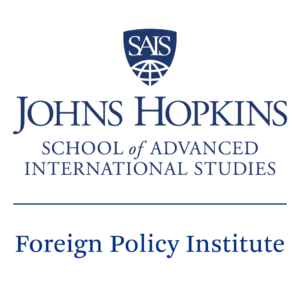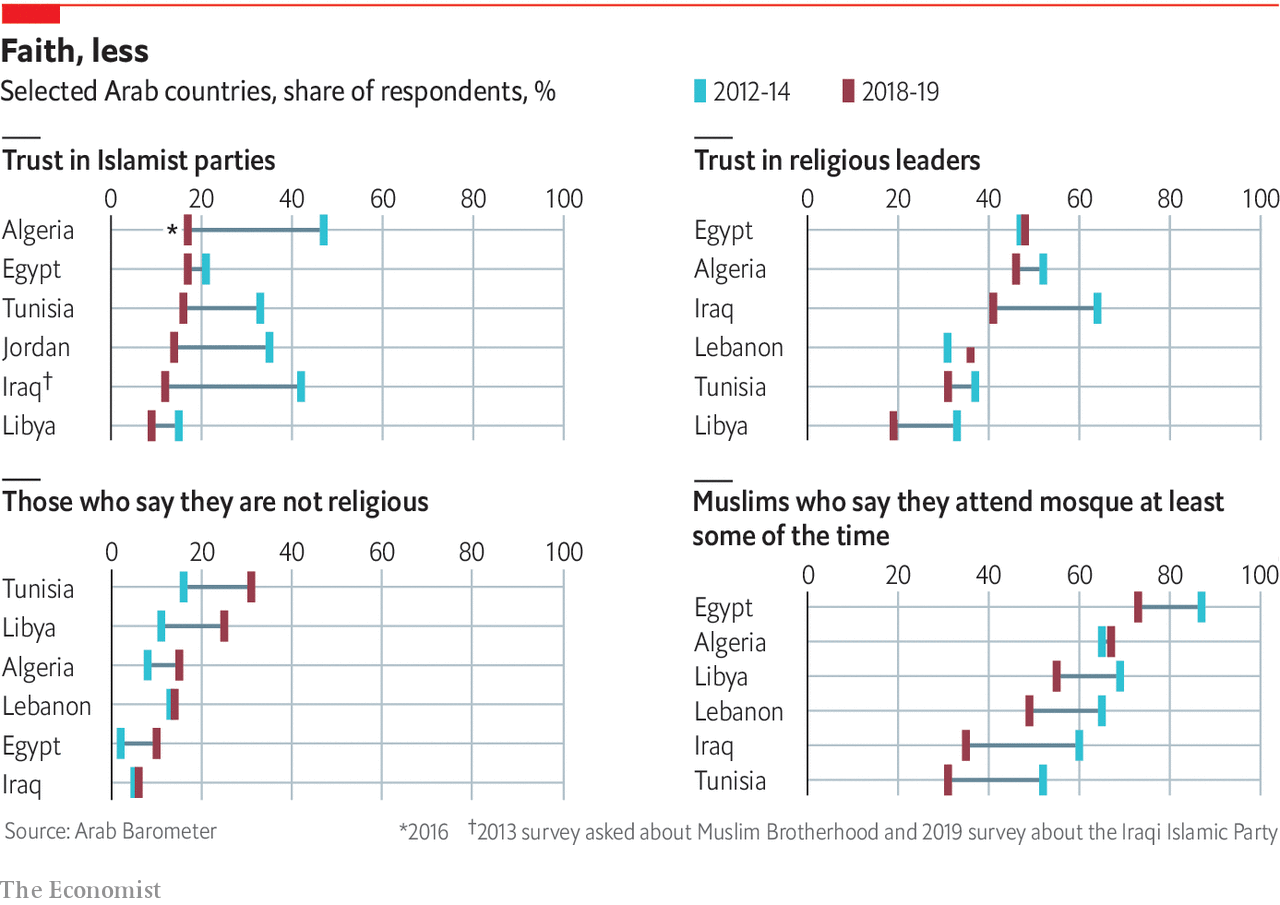
In Arab World, Losing Faith in Religious Politics
The Economist magazine had a nice piece on the latest findings from the Arab Barometer, a remarking polling service that surveys virtually the entire Arab Middle East and North Africa region on a regular basis.
An excerpt from the piece
“NO TO RELIGION or sect,” cry the protesters in Iraq. “No to Islam, no to Christianity, revolt for the nation,” echo those in Lebanon. Across the Arab world people are turning against religious political parties and the clerics who helped bring them to power. Many appear to be giving up on Islam, too.
These trends are reflected in new data from Arab Barometer, a pollster that surveys Arab countries. Across the region the share of people expressing much trust in political parties, most of which have a religious tint, has fallen by well over a third since 2011, to 15%. (The share of Iraqis who say they do not trust parties at all rose from 51% to 78%.) The decline in trust for Islamist parties is similarly dramatic, falling from 35% in 2013, when the question was first widely asked, to 20% in 2018.
For the full piece, see here
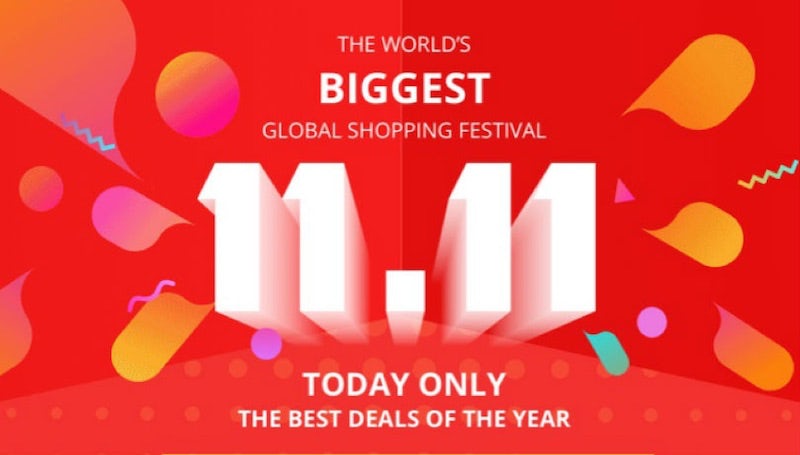
China’s “Singles Day” Shatters Records Again
It’s the biggest online shopping event in the world. China’s Singles’ Day — which took place on November 11 this year — shattered records again last month.
Some eye-popping stats below:
$211 Billion – The amount spent by Chinese shoppers online on Singles’ Day, according to the People’s Bank of China.
$38.4 Billion – The amount spent on Alibaba’s shopping platform on Singles’ Day.
544,000 – The number of orders per second recorded on Tmall, the giant business-to-consumer web site operated by The Alibaba Group.
1 million+ – Orders made by voice recognition technology on Alibaba’s e-commerce platform.
22,000 – The number of non-Chinese brands that advertised on Alibaba for Singles’ Day.
Source: Shanghai Daily and News Agencies
Interesting question: Why have India’s leading corporate players remained silent on slowing GDP growth? Are they afraid? NDTV reports
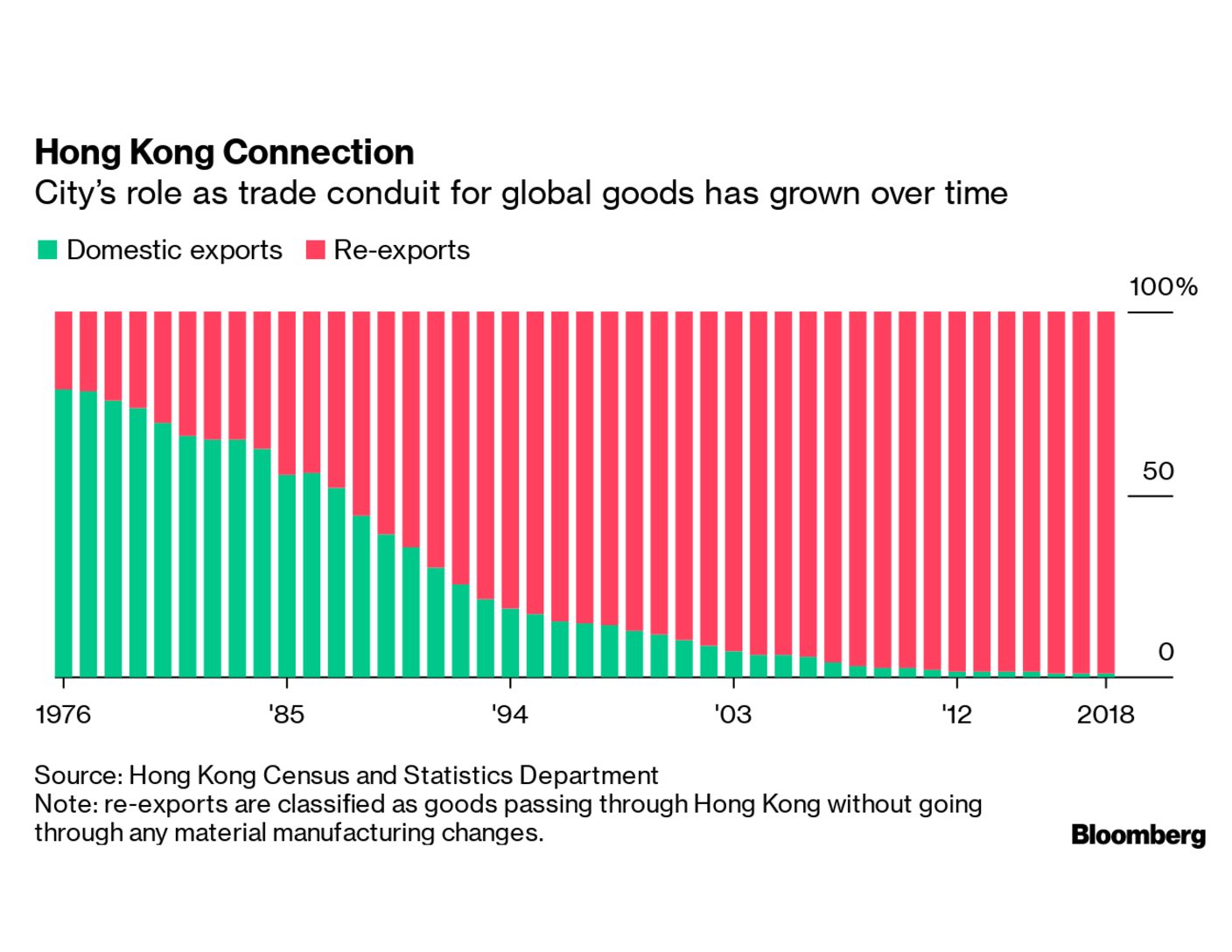
From “Made in Hong Kong” to Re-Exported from Hong Kong
If you are of a certain age (at least 40), you will remember many of the toys you grew up with had a familiar label on them: “Made in Hong Kong.” Gradually, however, as production shifted from Hong Kong to southern China, that ubiquitous “Made in Hong Kong” label quietly disappeared and gave way to “Made in China.”
Bloomberg’s Terms of Trade has a good post and chart (see above) on how Hong Kong exports today are primarily re-exports, mostly of “Made in China” goods. “Where once the workshops of Kowloon churned out low-price merchandise for sale around the world, nowadays the manufacturing is done across the border in Guangdong province,” the blog post notes. “That means almost all the goods Hong Kong sells are actually made somewhere else.”
This leaves Hong Kong more vulnerable to global headwinds even as protests have rocked the city. “Weaker global demand and the impact of the U.S.-China trade war have hit Hong Kong’s cross-border commerce at the same time as domestic economy is crippled by months of political protest. In October, exports shrank 9.2% from a year earlier, while imports dropped 11.5%, according to data released Tuesday.”

India’s Favorable Demographics
Are demographics destiny?
No, but a combination of good demographics and good governance can go a long way toward building a powerhouse economy.
India’s demographics are looking increasingly favorable. India’s governance remains a work in progress.
By the year 2030, India’s population will surpass China as the largest in the world. This piece in the FT had some interesting data on the median ages of several key Asian countries by the year 2030. India and Indonesia win the favorable demographics award, but both have been dogged by poor governance.
Median age of population by the year 2030
India: 30
Indonesia: 31
China: 40
South Korea; 47
Japan: 51
As Trinh Nguyen, senior economist for Asia emerging markets in the corporate and investment banking division at Natives, writes: “The potential is clear for both countries to transform these demographic booms into engines of domestic demand while positioning themselves as alternatives to China for labour-intensive manufacturing.”
He notes that this is the playbook deployed by both Thailand and Vietnam.
The trouble is, however, that China already handles 1/5 of world manufacturing output. That means enormous sunk costs and supply chain links. There is a great deal of talk about India taking over some of China’s low-cost manufacturing, but that is much easier said than done.
Yes, India will have a strong demand engine going forward, but challenging China on manufacturing is a hard sell.
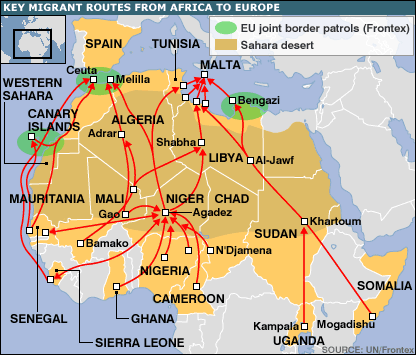
Africa-to-Europe Migrant Death Toll: 57,000
Never underestimate the human will to seek a better life — even in the face of immense danger.
A UNHCR unofficial estimate suggests that some 57,000 people may have died over the past five years trying to get to Europe from Africa. That’s more than 31 deaths per day. Let that sink in.
And here’s the kicker: those deaths are not all at sea. In fact, Vincent Cochetel, a UN High Commissioner for Refugees (UNHCR) special envoy for the central Mediterranean, said in an interview with a German newspaper that around twice as many migrants die crossing Africa to get to the coast as they do crossing the Mediterranean.
With 19,000 deaths in the Mediterranean waters since 2014, that would amount to some 38,000 deaths on land – a total of 57,000.
Again, 31 deaths per day. And with Africa’s demographic numbers – potentially a doubling of the continent’s population by 2050 — this is one of the great challenges of our era. No matter how bullish one is on Africa’s promise and its economic potential (consider me one of the bulls), it will be hard to imagine creating enough jobs in the short to medium term to stem this flow.
For more, see this piece in DW.
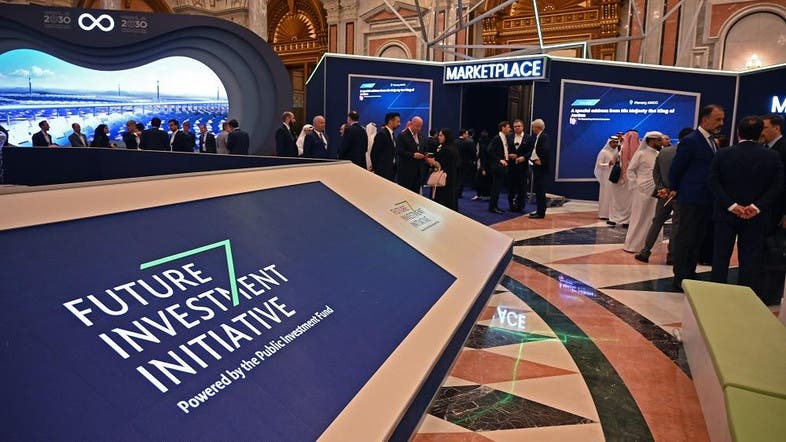
Saudi Arabia’s “Davos in The Desert” Video
Saudi Arabia’s Future Investment Initiative has become a marquee event on the global business, Davos-ish circuit, attracting some of the biggest of the big names in finance and investment at their recent confab.
And if you’d like to watch every single plenary session, well, Alarabiya’s YouTube channel has it for you here, here, and here.
More to come on this…
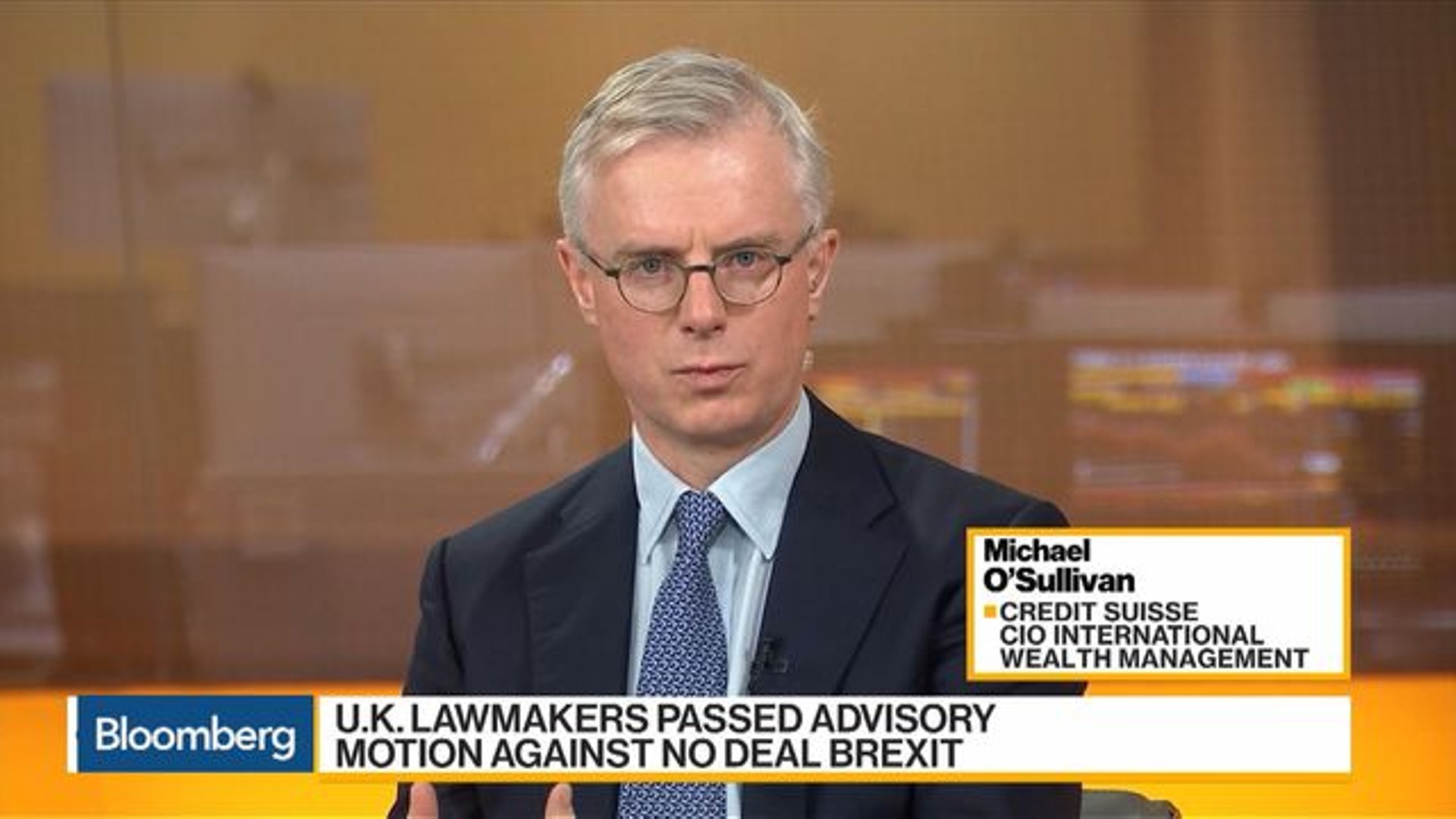
O’Sullivan on Global “Demonstration Contagion”
By Michael O’Sullivan
Editor’s Note: Michael O’Sullivan, one of the sharpest geopolitical and global markets thinkers out there, writes a must-read weekly letter to subscribers. I always find it fascinating, rich, sober, and erudite. You can see more of Michael’s work here.
10 November, 2019 – In last week’s missive, I discussed the role of rising food prices as a trigger for public protest and I suspect, as a cause of future geopolitical strife. It is not a very happy topic but one that deserves some further analysis given that in recent weeks there has been a remarkable outbreak of protests across a range of countries – from riots in Honduras, to ongoing tension in Hong Kong to climate related demonstrations in India.
Were I one of the many apocalyptic writers who seize upon every misfortune as confirmation of their worldview I would tell you that this is the start of ‘The Levelling’, and that the ‘end’ will follow shortly.
Though I will spare my readers such a gloomy outlook, there is nonetheless a ‘Levelling’ like narrative that unites the motivation for the many international protests in the sense that most of them are provoked by factors that are associated with globalization (though in reality not usually caused by it).
For example, climate change has spurred Extinction Rebellion movements in Europe and environmental protesters in India. Factors that are associated with a lack of what I call ‘country strength’, such as corruption and weak institutions have been amongst the triggers for protests in Lebanon and Iraq, whilst the cost of living and rising fuel costs have brought people out onto the streets in Chile, Egypt, Ecuador and France. Inequality is also a driver, especially so in Chile, Mexico and Turkey.
Together these protests (by the way the number of Google searches on the world ‘protest’ is at a five year high) point to a world where there is limited patience for policy negligence and its negative socio-economic effects. I’ve had a look across the IMF and World Bank databases to find countries that are exposed to corruption, indebtedness, inequality and climate change. Many ‘candidates’ if I can put it like that are in Africa. One country worth watching – where inequality and indebtedness are high (as high as Jamaica), and where climate change is having a growing impact, is the US. It still has strong institutions but consider what might happen in the context of a deep recession (with no fiscal buffer).
While there is no sense that the various protest movements are in anyway coordinated, they may still be contagious within and across countries.
Within countries, social media makes protests easier to organize at short notice, easier to spread (dis)information and easier to bring to the attention of the wider public. It was no surprise that in the aftermath of the Arab Spring, protestors faced massive social media and cyber counterattacks from the Egyptian and Syrian authorities.
Protests are contagious across countries to the extent that social media can heighten sensitivity to issues and spread the ‘methodology’ of either violent or peaceful protest. For example, one image that crops up in protests around the world is the clenched fist of the Serbian peaceful protest group Otpor. There is also increasing contagion in financial markets in the sense that in emerging markets at least investors are reacting negatively to signs of political strife.
The troubling thought for the outlook is that the economic stresses underlying these protests will not go away anytime soon – inequality takes time to tackle, most governments are fiscally constrained, and many have high debt levels (i.e. Lebanon). To make matters worse, climate change points towards a more radically stressed environment.
However, the positive reading from all of this, at a time when it should be said that the quality of democracy and the rule of law internationally are deteriorating (according to the latest Freedom House ‘Freedom in the World’ report and the Rule of Law indicators in the World Justice Project dataset) is that people want less corruption, more equal societies and better balanced growth.
In that context, what is to be done? There are specific actions that can help, such as the relocation of the World Bank to Africa to act as an anchor against corruption and to spread best practice in institution building.
More broadly, I see a lot of space opening up for new political parties and movements, some that are interlinked across countries and others that are connected by their political methodology (i.e. use of social media). Then, eventually I see the such protests leading to efforts to remake social and political contracts along the lines of the Levellers’ Agreement of the People’, at least in democratic countries, so that policy issues such as climate change, inequality and corruption are more formally recognized and curbed at a policy level.
It will be a bumpy road politically, but the flourishing of protests around the world shows that something profound is occurring.
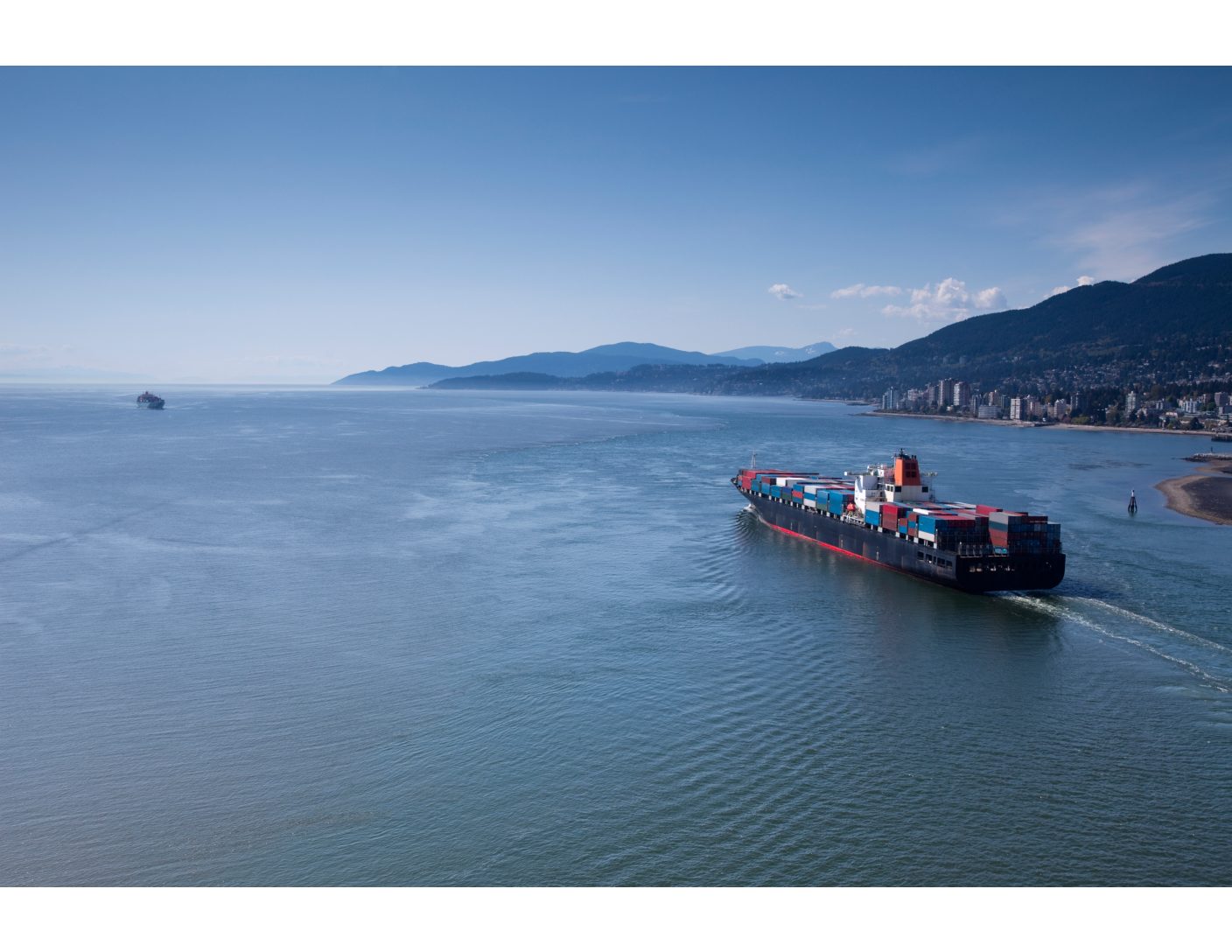
The Top Ten Global Container Shippers
The Journal of Commerce, in conjunction with research firm Alphaliner, has just published the top 40 Global Container Shipping operators list. What is striking is the dominance of the Top Ten – which control 87.9% of the market.
Here are the Top Ten Global Shipping Container Operators, with their market share.
- Maersk Group – 18.9%
- MSC – 16.3%
- Cosco Shipping – 13.3%
- CMA CGM Group – 12.3%
- Hapag-Lloyd – 7.6%
- Ocean Network Express – 7.1%
- Evergreen Line – 5.9%
- Yang Ming Line – 2.9%
- HMM – 1.8%
- Pacific International Lines – 1.8%

The Middle East’s Unique Moment to Shape World Trade
In my latest syndicated column published by Asia Times, I point to a unique confluence of events that can potentially give the Middle East and North Africa region – namely three states, Egypt, Saudi Arabia, and the UAE — outsized influence in the shaping of our future trade and economic order. All three states take the helm of major global institutions at a critical time: Egypt ascended to the Chair of the African Union, Saudi Arabia will host the next G20 meeting, and the UAE ascended to the presidency of the Indian Ocean Rim Association.
A short excerpt below:
Throughout much of modern history, the Middle East has largely been on the receiving end of decisions made by major powers. Beyond the sphere of oil, it has been receivers of the macro order, rather than a shaper of it.
But a unique confluence of events is taking place this year and next that could change all of that. Consider the following: Egypt ascended the chairmanship of the African Union this year at a critical time in the continent’s history, as virtually every African state has endorsed the new African Continental Free Trade Agreement, one of the most ambitious trade deals ever. Meanwhile, Saudi Arabia will host the Group of Twenty conference of major economies in November 2020, and the United Arab Emirates will soon take over the rotating two-year chairmanship of the Indian Ocean Rim Association, a grouping that includes more than a third of the world’s population and some of the fastest growing economies. Between them, Cairo, Riyadh and Abu Dhabi can play an outsized role in shaping a new global trade architecture.
It is rare for three states in the Middle East and North Africa region to be in such a position of power to shape the world order, particularly at such an uncertain moment in the fate of our globalized economy. It will come as no secret that many Western nations and their citizens have become skeptical of free trade and globalization – despite the fact that the rules of the game were largely written by Western nations.
I also published an original piece in Arabic with Elaph, a pioneering Arabic news media organization, on Saudi Arabia’s moment of opportunity with the G20. You can find it here, and there’s an English version as well, with excerpts below:
Is the global economy cracking?
That is the question on many minds these days as ominous signs loom over the horizon. Germany is the latest concern. The European economic powerhouse witnessed an economic contraction in the 2nd quarter of this year, and could be headed for another quarter of negative growth, thus tipping into recession. Singapore, the bellweather of the global economy, is also witnessing a dramatic slowdown, slashing its 2019 forecast to near zero. Meanwhile, factory output in China has seen its slowest growth in 17 years.
All three cases – Singapore, Germany, and China – have something in common: all are highly reliant on global trade. As trade tensions rise amid the U.S-China showdown and the rise of populist free trade skeptical politicians in the Western world, the Middle East and North Africa region may be facing some heavy economic winds over the next two years. In fact, all across the developing world, the lingering effects of this clash of giants will be felt.
Saudi Arabia has a unique opportunity to play a key role in this uncertain moment. Next year, Saudi Arabia will host the annual G20 Summit of the world’s leading economies. As host, Saudi Arabia will also play a key role in setting the agenda for the summit. By the time the summit takes place in late November 2020, President Donald Trump will be either entering his second term as President or be making his farewell tour.
